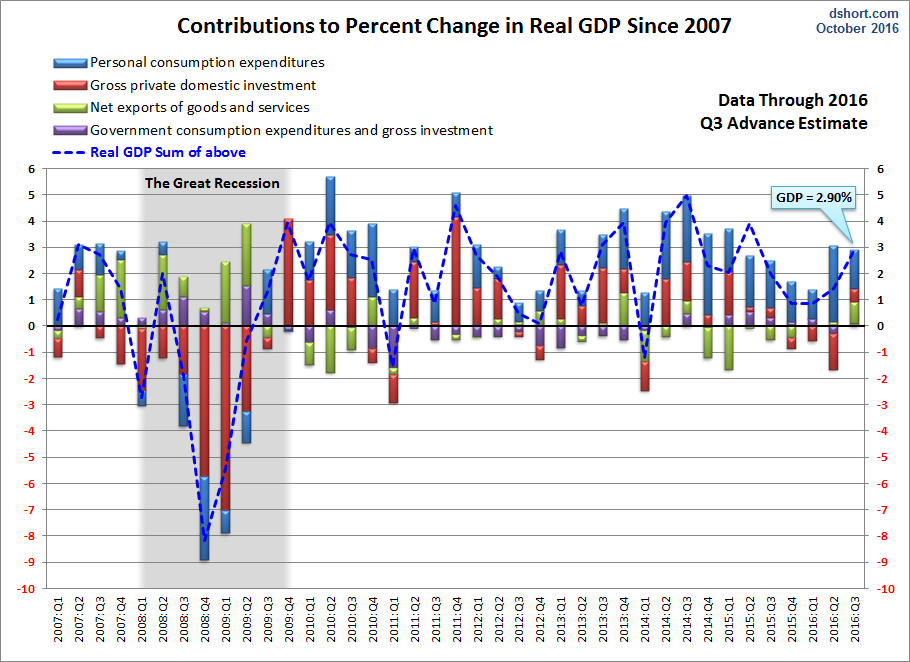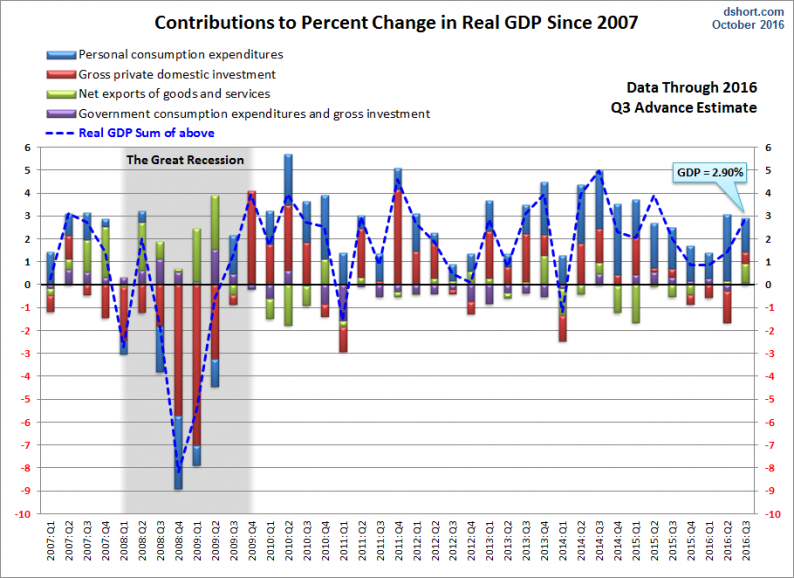Note: The charts in this commentary have been updated to include the Q3 2016 Advance Estimate.
The chart below is a way to visualize real GDP change since 2007. It uses a stacked column chart to segment the four major components of GDP with a dashed line overlay to show the sum of the four, which is real GDP itself. Here is the latest overview from the Bureau of Labor Statistics:
The increase in real GDP in the third quarter reflected positive contributions from personal consumption expenditures (PCE), exports, private inventory investment, federal government spending, and nonresidential fixed investment that were partly offset by negative contributions from residential fixed investment and state and local government spending. Imports, which are a subtraction in the calculation of GDP, increased.
Let’s take a closer look at the contributions of GDP of the four major subcomponents. The data source for this chart is the Excel file accompanying the BEA’s latest GDP news release (see the links in the right column). Specifically, it uses Table 2: Contributions to Percent Change in Real Gross Domestic Product.

Note: The conventional practice is to round GDP to one decimal place, the latest at 2.9%. The GDP in the chart above is the real GDP calculated to two decimal places. In this case rounding made no difference.
Over the time frame of this chart, the Personal Consumption Expenditures (PCE) component has shown the most consistent correlation with real GDP itself. When PCE has been positive, GDP has usually been positive, and vice versa. In the latest GDP data, the contribution of PCE came at 0.69 of the 2.9 real GDP, an interesting decline over the previous quarter resulting from substantial increases in the other three components.
The contribution from Gross Private Domestic Investment rose significantly from the previous quarter.
Net Exports, which is largely impacted by fluctuations in Dollar strength, made its largest contribution since Q4 of 2013. Government expenditures were fractionally positive.













Leave A Comment